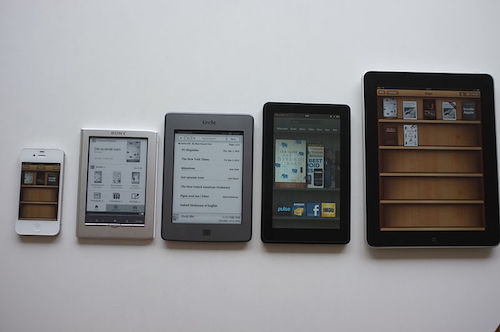Recently, there have been several big changes in the book-subscription-service world.
Oyster, an ebook-subscription service, announced in September 2015 that it would be ending all services in January 2016. In June 2015, the Scribd subscription service announced it would be limiting the number of romance titles in its catalog due to their extreme popularity. Kindle Unlimited has changed the way its authors are paid for their ebooks, from a number-of-books-borrowed to a number-of-pages-read metric.
It is hard to tell how well these services are doing. Statistics are selectively released to the public. Scribd boasts one billion pages read in 2014—impressive, yes—but we don’t know what kind of success that is for the company. Were they aiming for half that? Three times that? How much did it cost them? Kindle Unlimited paid authors more from May to June 2015 than the Nook store did, but we still don’t know what kind of reveue the company has created. Oyster and Scribd miscalculated profit and loss in a way that directly affected its readers. As a result, one is shutting its doors, and another has removed many of its more popular titles.
One suggestion is that standalone ebook-subscription services are unsustainable, but recent data show that ebook subscribers spend more on books than nonsubscribers do. This still doesn’t mean the standalone model is profitable; we still don’t have the numbers to show whether it is or not. Simply put, the readers cannot read more than the company spends on books.
Something that is often missing from this conversation is that there is already a “Netflix for books.” Public libraries have existed in the United States since the late 1800s. Overdrive is the largest of the digital library vendors, partnering with thirty-four thousand libraries worldwide. Libraries celebrated a one-day record of over half a million checkouts through Overdrive in June 2015. Many libraries, unlike Scribd, have limits to the number of titles a single user can have at a time and the number of users a single title can have at a time. These statistics might be even higher if there were no limits; 195,000 users have placed themselves on a waitlist for a title on the same day.
There are no data that show how many library users are also ebook-service subscribers attempting to cover a gap in a subscription. No one has done a study showing how many people are tired of waiting for a book and leave the library for Scribd. More data should be collected if the publishing industry wants to know who its real power users could be. Those who use the library heavily but also purchase ebooks are a very real, untapped market. Similarly, there are no statistics yet showing the number of romance titles checked out of Overdrive after Scribd pulled them from its catalog. Keeping statistics close to the vest might be good for individual services as they adapt in this rapidly changing environment. We won’t have to wait long to see what happens next.

